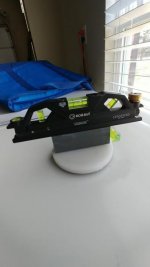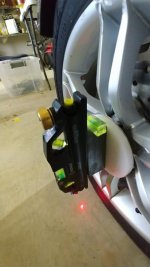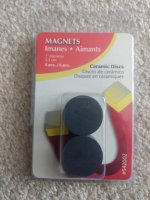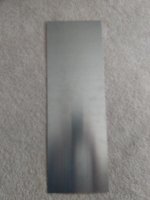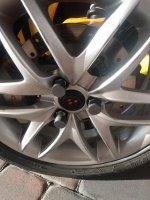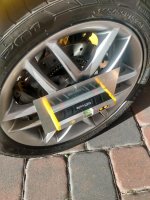OlJim
Member
After reading all the post and watching all the You Tube videos I thought I can do that. My 2011 RT was starting to show some uneven wear on the original tires. I took a steel plate and cut a 4.250 inch circle with a .250 inch hole in the center. I used 4.250 because that was the diameter of the roll of masking tape I had. To this I epoxied 3 each 5 lb. magnets to correspond with the location of the wheel studs. I then made a spacer to space the laser out to clear the wheel spokes and attached the laser with a .250 bolt. To my surprise the thing worked perfect and what a difference it made in the ride and handling in the corners. To center the front wheels I did a cross measurement from the end of the bars to a premeasured location on the passengers back rest. I then placed a level on top of the bars and fine tuned the location. We have a dealer in the area but they charge $250 which I thought was a little steep, also they do not have much experience, hence the price. I know this is probably not perfect but it will do until Squared Away comes to town in October.


